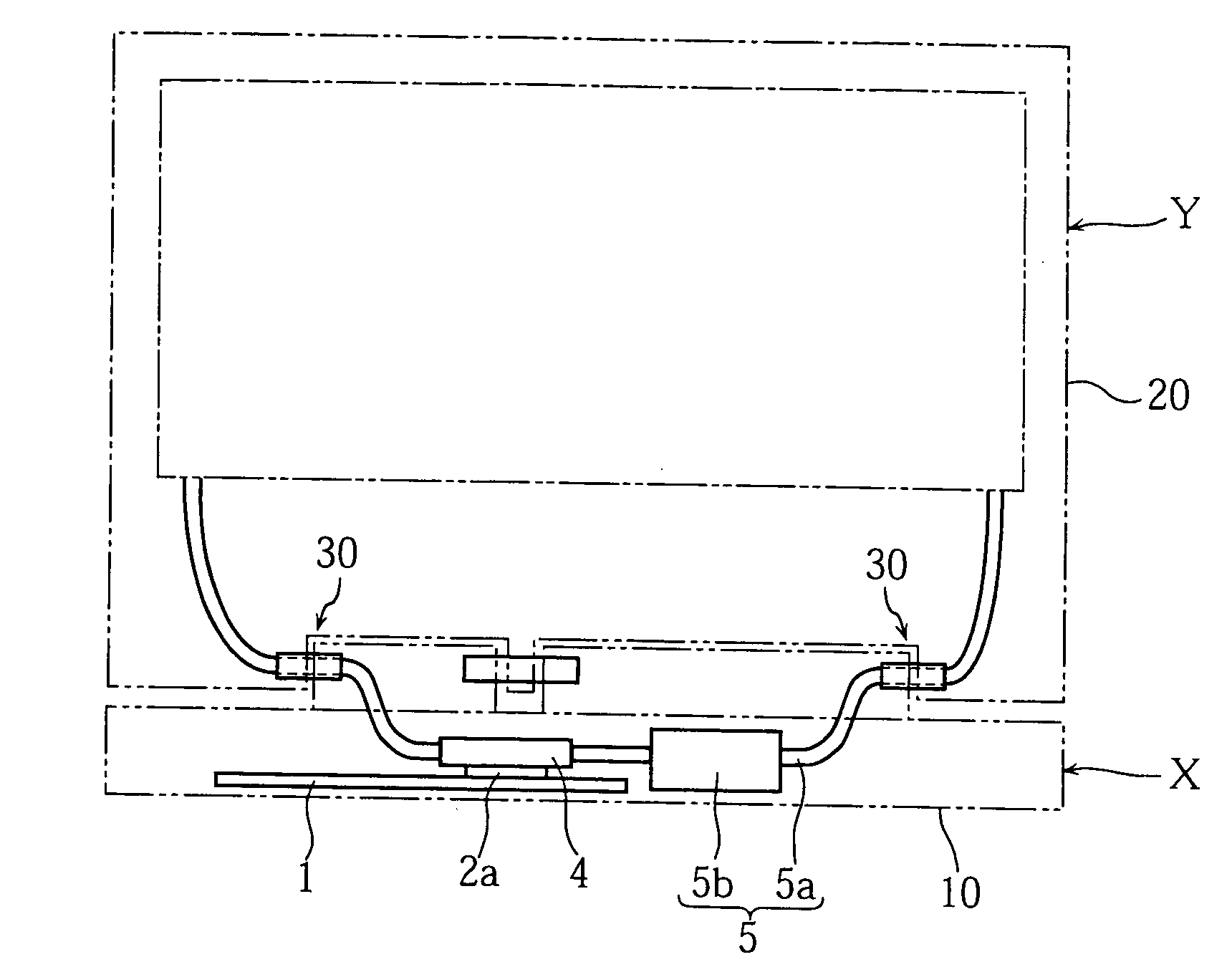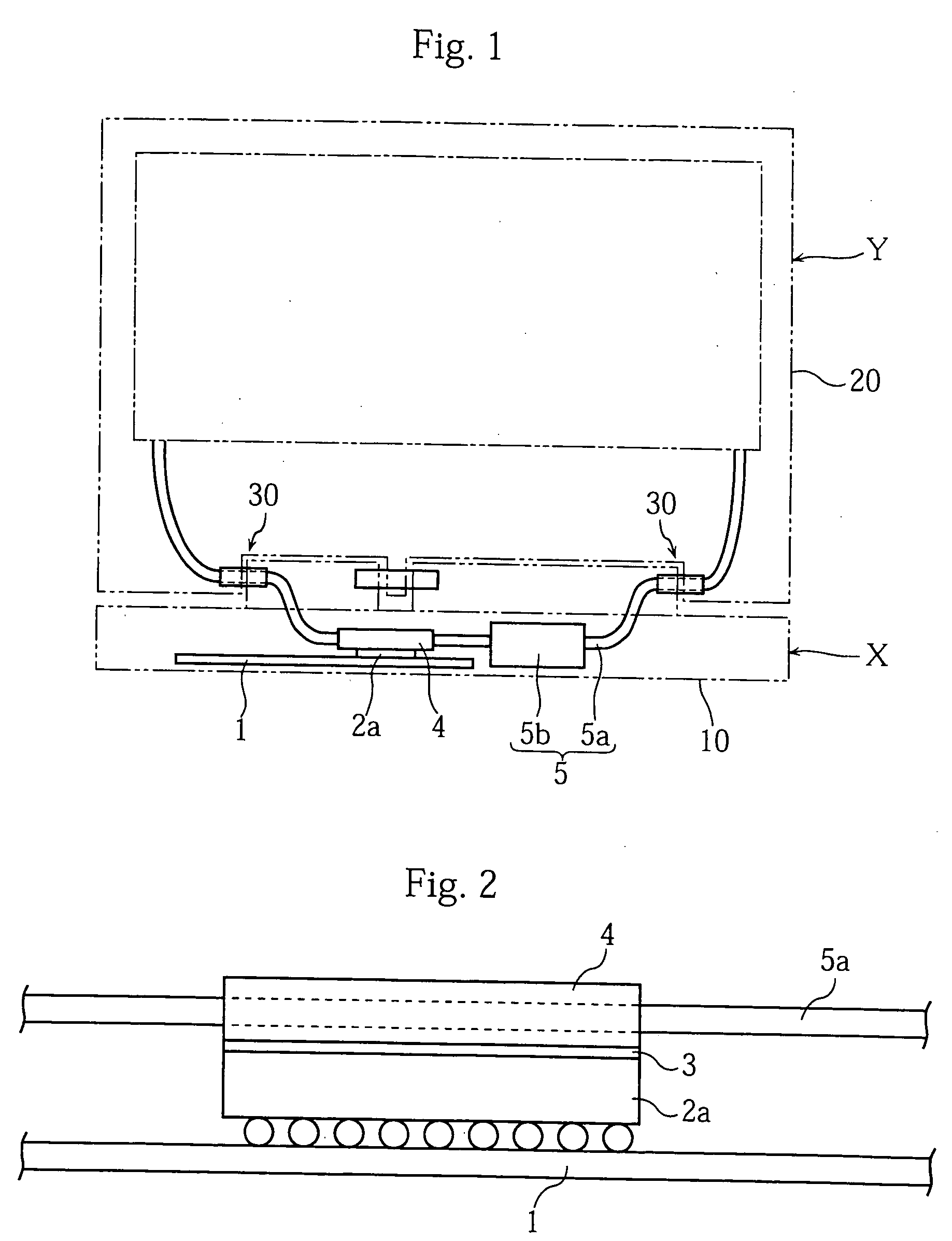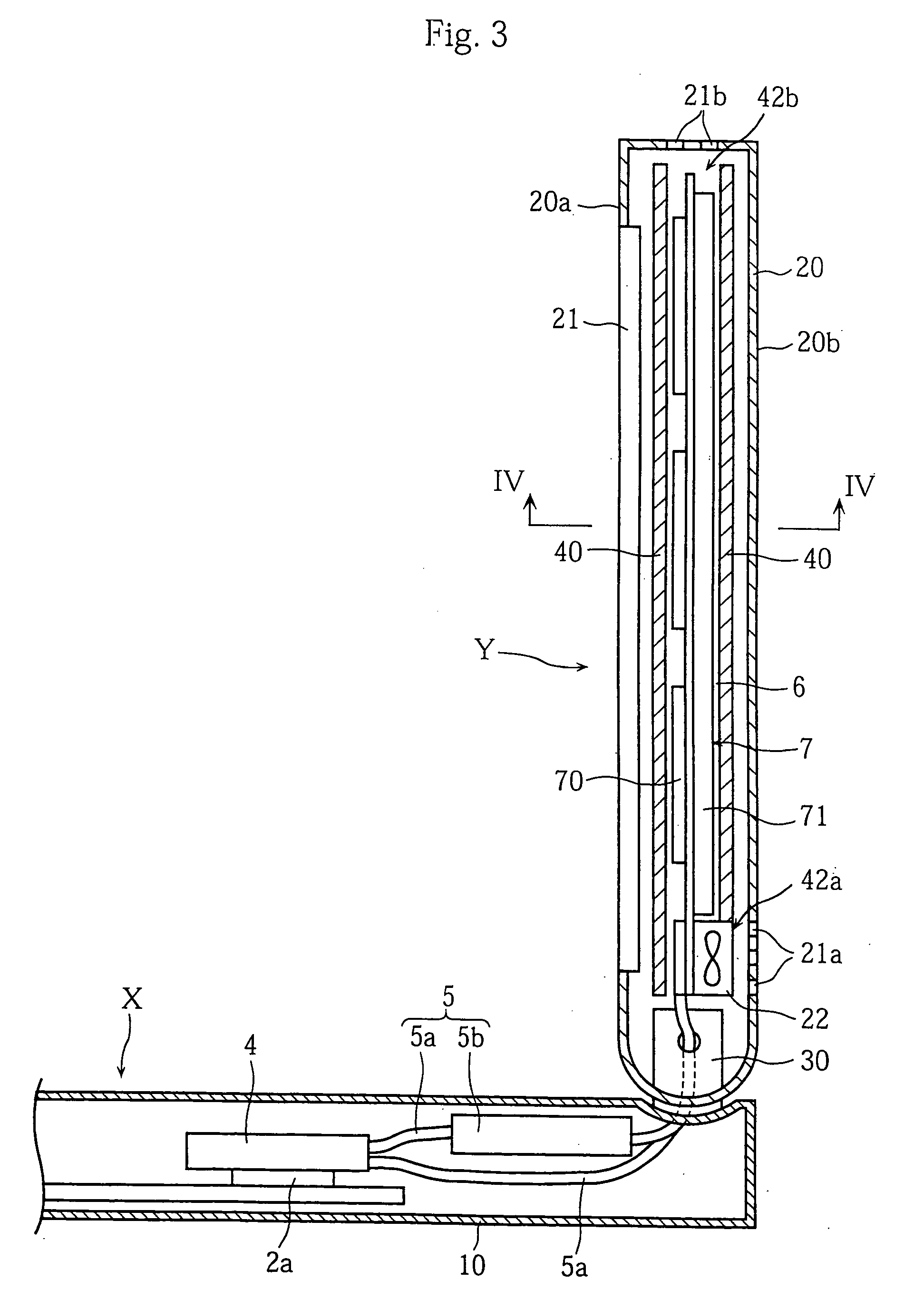Cooling structure for electronic equipment
- Summary
- Abstract
- Description
- Claims
- Application Information
AI Technical Summary
Benefits of technology
Problems solved by technology
Method used
Image
Examples
first embodiment
[0056] The cooling structure for a notebook PC of the present invention will be described in detail hereinbelow with reference to FIGS. 1 to 5.
[0057]FIG. 1 is a schematic front view of a notebook PC composed of a main body section X and a display section Y rotatably linked to the main body section X. In FIG. 1, the outer contour of a case 10 of the main body section X and the outer contour of a case 20 of the display section Y are shown by two-dot-dash lines. FIG. 2 is an enlarged view of the main portion of the structure shown in FIG. 1.
[0058] A circuit substrate 1 supported inside the case 10 is disposed in the main body section X. Electric and electronic elements, integrated circuits, and electronic circuit groups necessary for operating the notebook PC are mounted on the circuit substrate 1. Furthermore, a CPU, a MPU, and a chip set that become heat-generating sources during operation of the notebook PC are also disposed thereon. The main body section X also accommodates other ...
second embodiment
[0084] The cooling structure of the notebook PC of the present invention will be described below in greater detail with reference to FIGS. 16 to 19. In those figures, members or elements identical or analogous to those of the above-described cooling structure are assigned with the same reference numerals and redundant explanation thereof is omitted.
[0085]FIG. 16 and FIG. 17 show a notebook PC composed of a main body section X, a display section Y rotatably linked to the main body section X, and a heat-dissipating section Z. FIG. 16 is a front view thereof and FIG. 17 is a side view thereof. FIG. 18 is a cross-sectional view along the line XVIII-XVIII shown in FIG. 17. In FIG. 16, the outer contour of a case 10 of the main body section X and the outer contour of a case 20 of the display section Y are shown by two-dot-dash lines.
[0086] The main body section X, as shown in FIG. 16, comprises a circuit substrate 1 and a heat-generating body 2a inside the case 10. In the second embodime...
third embodiment
[0095] The cooling structure of the space-saving PC of the present invention will be described below in greater detail with reference to FIGS. 22 to 29. In those figures, members or elements identical or analogous to those of the above-described cooling structure are assigned with the same reference numerals and redundant explanation thereof is omitted.
[0096] FIGS. 22 to 25 are schematic views of he space-saving PC composed of the main body section X′ also serving as a display section and the heat-dissipating section Z rotatably linked to the main body section X′ also serving as a display section. FIG. 22 is a front view thereof, FIG. 23 is a right side view thereof, FIG. 24 is a left side view thereof, and FIG. 25 is a rear view thereof. Further, FIGS. 26 and 27 are the enlarged schematic views of the heat-dissipating section Z, FIG. 26 is the front view thereof, and FIG. 27 is a rear view thereof. FIG. 28 is a cross-sectional view along the line XXVIII-XXVIII shown in FIG. 26 and ...
PUM
 Login to View More
Login to View More Abstract
Description
Claims
Application Information
 Login to View More
Login to View More - R&D
- Intellectual Property
- Life Sciences
- Materials
- Tech Scout
- Unparalleled Data Quality
- Higher Quality Content
- 60% Fewer Hallucinations
Browse by: Latest US Patents, China's latest patents, Technical Efficacy Thesaurus, Application Domain, Technology Topic, Popular Technical Reports.
© 2025 PatSnap. All rights reserved.Legal|Privacy policy|Modern Slavery Act Transparency Statement|Sitemap|About US| Contact US: help@patsnap.com



